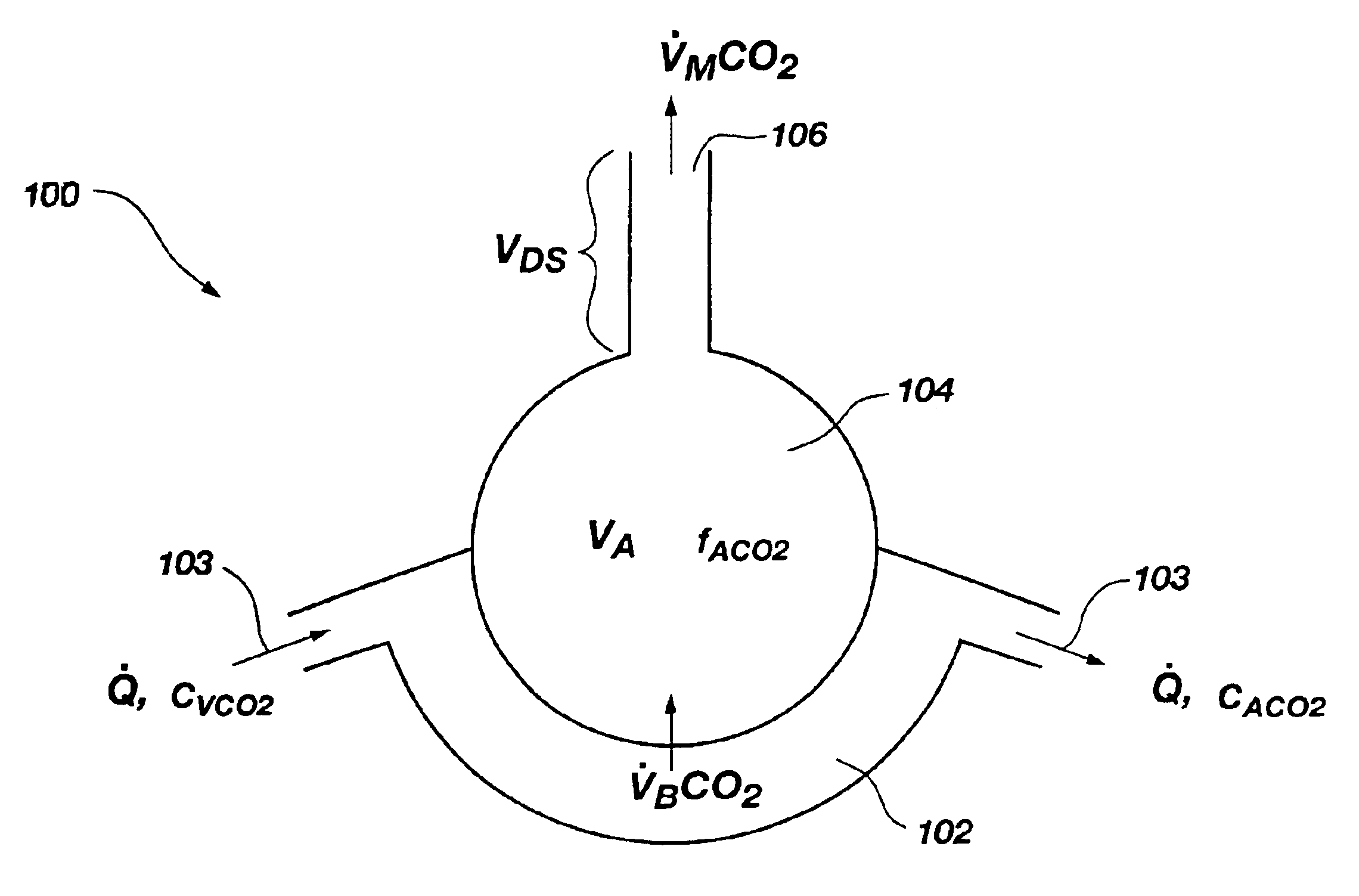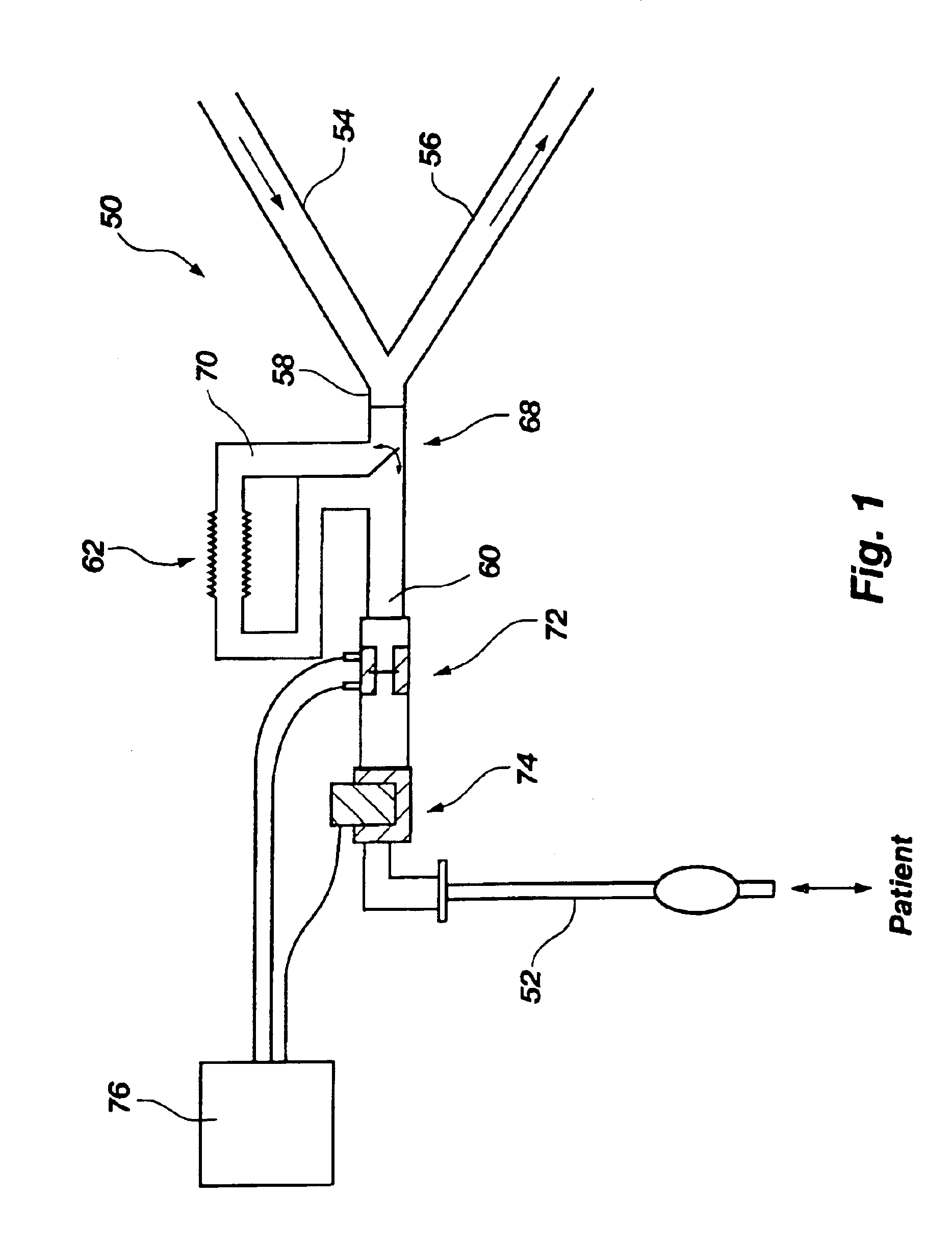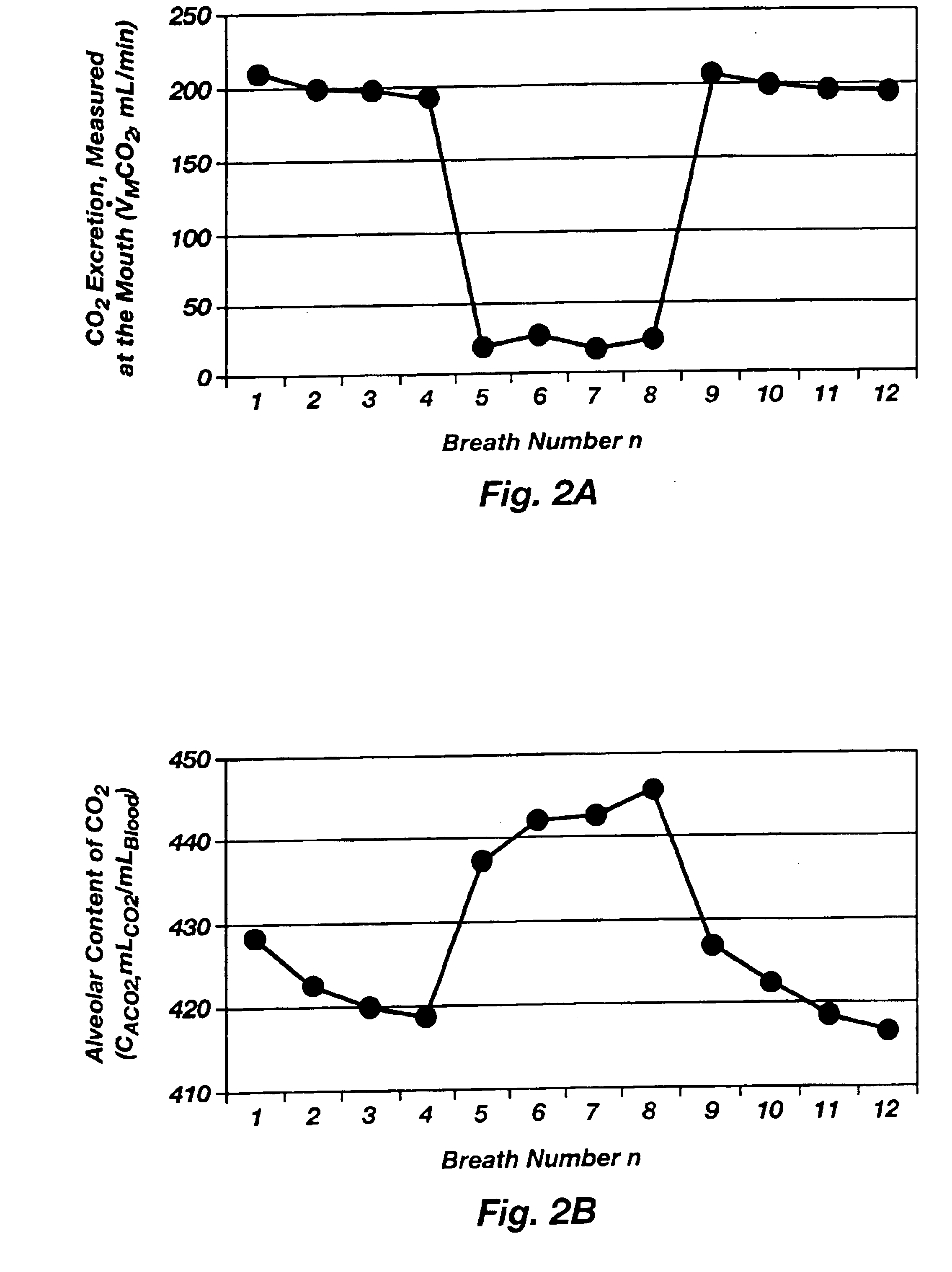Algorithms, systems, and methods for estimating carbon dioxide stores, transforming respiratory gas measurements, and obtaining accurate noninvasive pulmonary capillary blood flow and cardiac output measurements
a technology of carbon dioxide storage and which is applied in the field of noninvasively determining the pulmonary capillary blood flow or cardiac output of an individual, can solve the problems of inability to accurately determine inability to correlate well with each other, and inability to accurately measure the pulmonary capillary blood flow or cardiac output. achieve the effect of accurately and noninvasively measuring the pulmonary capillary blood flow or cardiac outpu
- Summary
- Abstract
- Description
- Claims
- Application Information
AI Technical Summary
Benefits of technology
Problems solved by technology
Method used
Image
Examples
example
[0077]Using a common protocol, anesthesia was induced in five mongrel dogs (25.8 kg to 42.4 kg) using tiletamine and zolazepam. Each animal was intubated and mechanically ventilated throughout the experiment. Anesthesia was maintained with halothane and isoflurane. Cardiac output was increased during the experiment using dobutamine and decreased using halothane, xylazine, or a combination thereof.
[0078]A DUALTHERM (B. Braun Medical Inc., Bethlehem, Pa.) pulmonary artery catheter was placed and used for periodic thermodilution cardiac output measurements. The DUALTHERM catheter uses a dual thermister that directly measured injectate temperature, thereby eliminating errors caused by faulty injectate temperature measurement. Thermodilution cardiac output measurements, using about 10 ml of iced saline, were taken in triplicate every 10 minutes at random times during the respiratory cycle.
[0079]{dot over (V)}MCO2 and petCO2 were recorded using a commercially available partial rebreathing...
PUM
 Login to View More
Login to View More Abstract
Description
Claims
Application Information
 Login to View More
Login to View More - R&D
- Intellectual Property
- Life Sciences
- Materials
- Tech Scout
- Unparalleled Data Quality
- Higher Quality Content
- 60% Fewer Hallucinations
Browse by: Latest US Patents, China's latest patents, Technical Efficacy Thesaurus, Application Domain, Technology Topic, Popular Technical Reports.
© 2025 PatSnap. All rights reserved.Legal|Privacy policy|Modern Slavery Act Transparency Statement|Sitemap|About US| Contact US: help@patsnap.com



